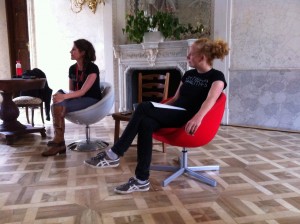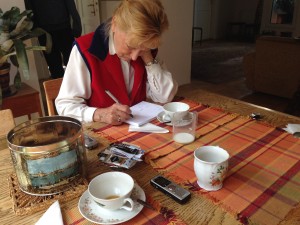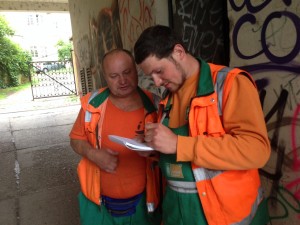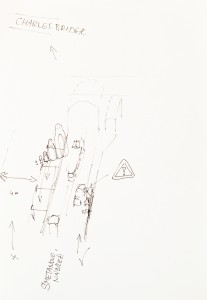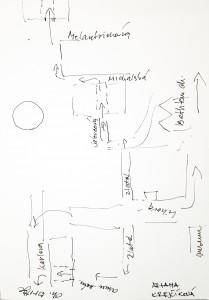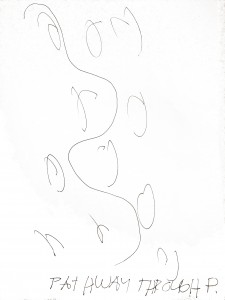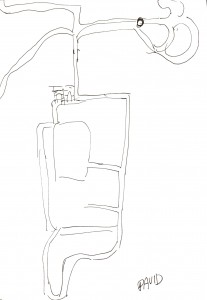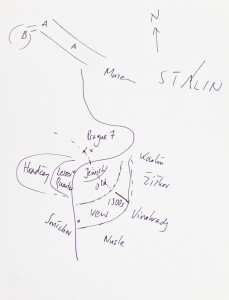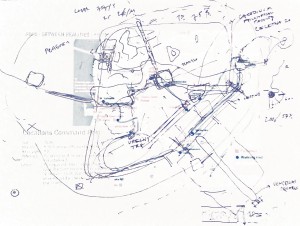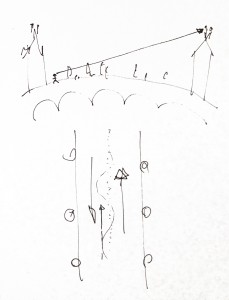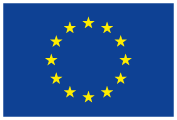Prague Quadrennial of Performance Design and Space 2015
“All the world is a stage” is no longer a metaphor, but a reality itself. Today we witness a multiplication of staged realities. We are between realities. How do we cope with this complex reality? What strategies do we use? And how do these play out in urban public space? Within the context of the theatricalisation of every day life, public space can be observed and studied as scenography. The multiplication of staged and imagined realities can be most intensely felt in urban public space where layers of tourism, entertainment, consumption, art, work, leisure, history, policies, and politics come together. It is precisely here where we can see how people live between realities and how they cope with its complexity.
The Dutch project (Between Realities) for the Prague Quadrennial of Performance Design and Space 2015, distinguishes between five different coping strategies: sheltering, fleeing, fighting, negotiating, surrendering. Each of these strategies/practices entails a particular attitude towards reality. Either a movement away from reality (hide or shelter), an engagement with reality (fight or negotiate) or a plunge in reality (surrender). For this Quadrennial, Naomi Bueno de Mesquita (research associate at Design Academy Eindhoven) explored different mapping approaches, with which she represented the Dutch entry for the Spaces exhibition. The approaches were covered by two projects: Collective Mapping of Public Space and Audio Story Mapping. The exploration took place in Prague from 18th until 26th of June 2015 and was presented to the public on the 27th of June at the Clam Gallas Palace lecture hall, both by Naomi Bueno de Mesquita and Sigrid Merx (curator). The Netherlands received the gold medal for best curatorial concept of this quadrennial.
Approach 1: Collective Mapping of Public Space
Six mapping sessions were organised (for which visitors of the quadrennial could subscribe). Naomi’s aim was to collectively map the dynamic use and performances of the old town square. Participants were asked to use an application for a mobile phone that was designed for this purpose. The tool in this app has several brushes incorporated, which is the legend of the map. Each brush represents a performer in public space. It was collectively decided upon which performers were interesting to trace for that moment of the day. The cartographic exploration consisted of following people of a certain category for 15 minutes. That is, walking behind the person as close as possible with which each cartographer was able to leave a trace of the person on the digital map, a map that was collectively constructed over time. The longer the cartographer stood still, the thicker the line on the map became, allowing the more dynamic aspect of velocity and time to be visualised. While doing this, the cartographer made pictures of moments or spaces of friction (where different realities meet or conflict).
Naomi explores the potentials of this method (a very direct way of mapping) in which the mobile phone is used as an ethnographic mapping device which allows the researcher to stand closer to his/her subject without having the feeling of invading the other persons space. On the other hand does it explore the performative (or even theatrical) aspects of the embodied way of mapping. The act of following (which is performed by different participants simultaneously) in a confined public space, makes the cartographers linked in a performance. Understanding public space as a stage and the question who ‘the public’ is in different situations was discussed after each mapping session.
Approach 2: Audio Story Mapping
Aiming to explore the hiding strategies of local inhabitants living in Prague centre, Naomi made an attempt to map the parallel worlds that are created within the reality of mass tourism. She wanted to find out where these worlds materialise and what stories can be told about the places and practices of hiding.
“Before going to Prague I had assumptions about how local residents, living in the centre, would be annoyed by the tourist hordes and would make attempts to escape them. I had the fortunate to have long interviews (approximately 2 hours per interview) with six local residents of different age ranges who live in the very centre of Prague. I asked them to take me to a place that facilitates the act of sheltering and to explain the unwritten rules or codes that accompany the place. I found that their answers were evidence more of surrender than escape. Most of the people I interviewed said they weren’t bothered by the tourism or even liked it (maybe as a tourist I am more inclined to be annoyed by other tourists than locals are?). However, as the interviews progressed, it became apparent that these residents obviously were escaping the tourist hindrance. Ariana, a women in her seventies, living right next to the Charles Bridge, did not at any point during the two hour conversation, mention Karlova street (the busiest street leading towards the bridge). Another student I took a walk with, guided me through the side streets he often used to take shortcuts and as a venue to meet or socialise with friends. Places where homeless people congregated tended to be avoided because of the smell but sometimes these routes were preferred as thoroughfares because they were less busy. I asked the people I interviewed if they could draw a map or outline the strategy they used to circumnavigate the tourists.”
The maps can be “read” by going to the exact same location to uncover the story of that particular place. The map-reader has to stand on the exact same spot as where the story was told (deviating from this spot makes the audio fade out). The story can be listened to with headphones and by downloading the audio track on one’s mobile phone (via this link: http://performativemapping.net/btwreal/audio). Taking time for the story to unfold and this very personified one to one way of mapping, explores the more active role of the ‘map-reader’ and taking the time to ‘read’ a map.
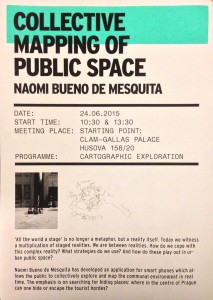
Invitation
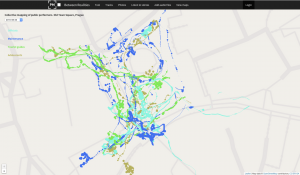
Collective mapping of public performers, old town square Prague. 23rd of June 10:30 a.m and 15:30 p.m. Turquoise = Officials, Blue = Maintenance, Green = Tourist guides, Gold = Adolescents
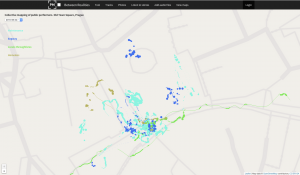
Collective mapping of public performers, old town square Prague. 24th of June 10:30 a.m. Turquoise = Maintenance, Blue = Segway, Green = Locals’ throughfares, Gold = Homeless
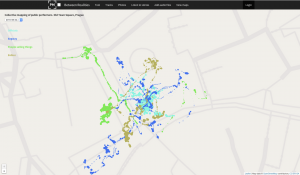
Collective mapping of public performers, old town square Prague. 24th of June 15:30 p.m. Turquoise = Officials, Blue = Segway, Green = People selling things, Gold = Babies
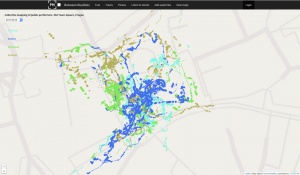
Collective mapping of public performers, old town square Prague. 25th of June 10:30 a.m and 15:30 p.m. Turquoise = Officials, Blue = Lovers, Green = Suitcases, Gold = Animals
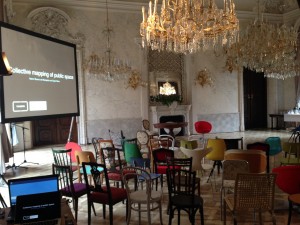
Clam Gallace Palace lecture hall
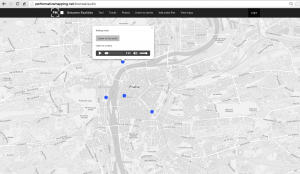
Map demonstrating places where stories can be retrieved
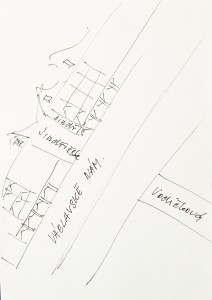
Escape routes during communism, by Airana

